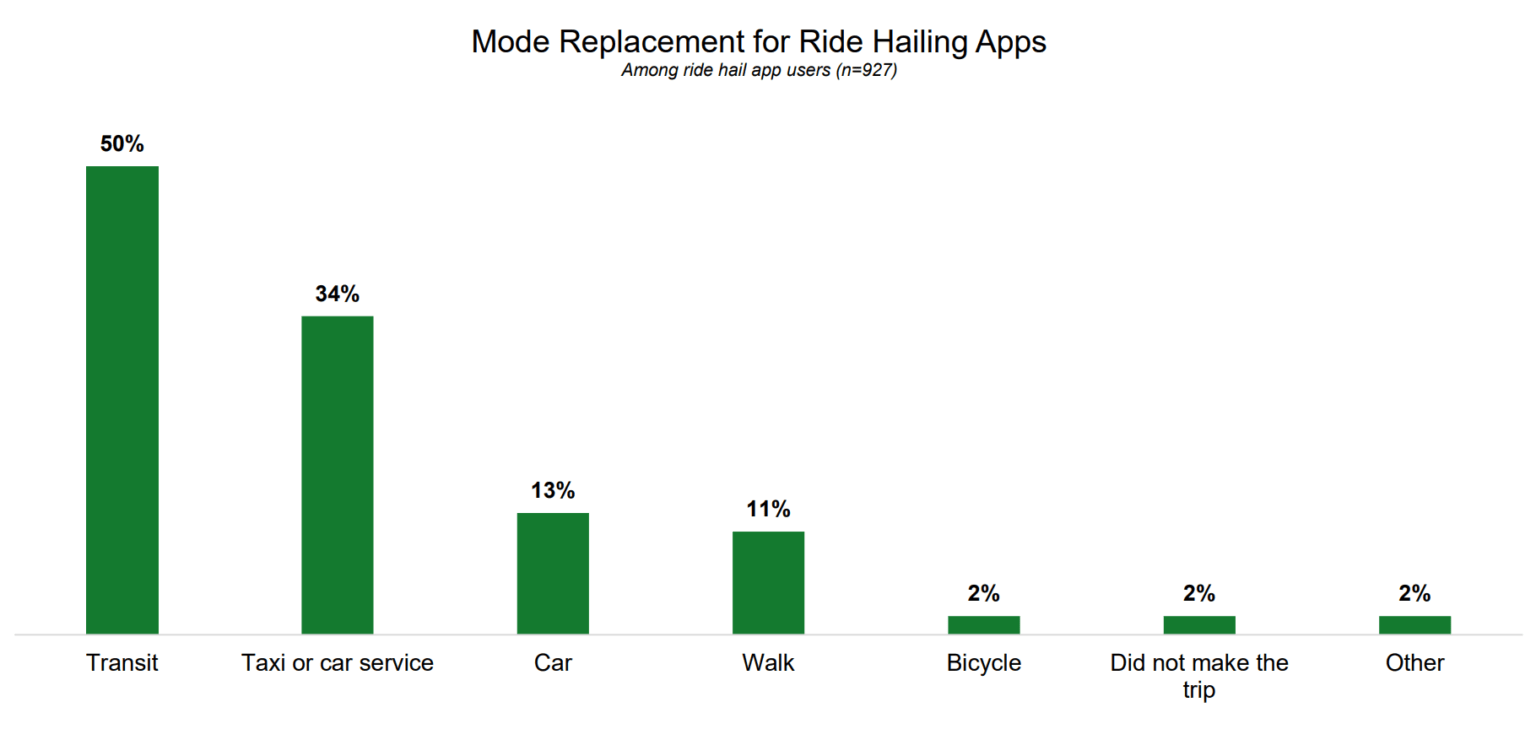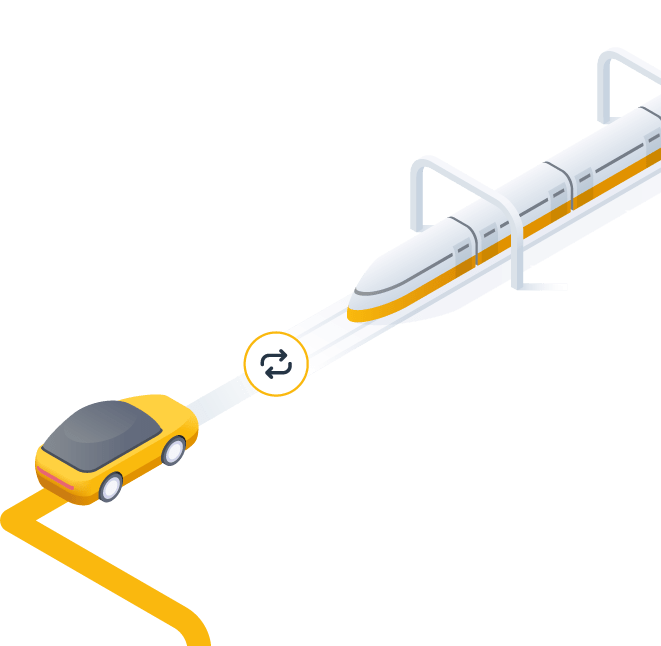H
H
This has a number of negative impacts: congestion levels rising, transit ridership decreasing, increased accident rates, and greater pollution.
Not to mention the social impact when relatively affluent people in ride-hailing cars congest the streets and slow down buses preferred by more price-sensitive residents relying on public transport.
This brings us to a great dilemma: How to enable ride-hailing growth without stealing passengers from public transport?
How to enable ride-hailing growth without stealing passengers from public transport?
Ride-hailing does displace public transport…
The bleak picture is supported by figures. The 2018 Fare Choices survey of nearly 1000 ride-hailing riders in Boston conducted by Metropolitan Area Planning Council found that 42 percent of respondents would have taken transit if the ride-hailing services hadn’t been available.
Another 12 percent said they would have biked or walked. Another 5 percent would have just avoided the trip altogether. Only about 17 percent said they would have otherwise made the journey in their private cars.

And the situation is no different in other cities. The 2018 Citywide Mobility Survey by New York City Department of Transportation (NYC DOT) showed even more worrying results.
50 percent of respondents would have taken public transport and 11 percent would have walked had there not been the option of a ride-hailing trip.

50% of respondents in NYC and 42% in Boston would have taken transit if the ride-hailing services hadn’t been available.
…and does increase vehicle miles travelled.
While ride-hailing operators claim they only satisfy the existing demand for passenger transport on an unsaturated market, they, in fact, pull passengers away from transit systems even in areas well-served by public transport.
Besides, they offer pedestrians an enticing but unhealthy transport option even in easily walkable areas. In effect, ride-hailing services increase vehicle miles travelled on city streets.
According to 2018 Schaller Consulting report The New Automobility, for each mile of private car driving removed, ride-hailing adds about 2.6 miles.
For each mile of private car driving removed, ride-hailing adds about 2.6 miles.
New technologies will take ride-hailing prices down. What then?
The advent of electrification and later self-driving technology is likely to skew passenger preferences in favour of ride-hailing services on an even wider scale.
Rapid advances in these technologies and connectivity, along with AI-related ethical issues being resolved, are bringing autonomous vehicles closer to real-world deployment.
We will see a rapid decrease in on-demand mobility pricing. At a future level of 0.10-0.20 EUR per kilometre, how could public transport compete for passengers?
At a future level of 0.10-0.20 EUR per kilometre, how could public transport compete for passengers?
But don’t get me wrong. By no means am I implying that ride-hailing services should be viewed as the source of all evil in urban congestion.
The point is that we need policy decisions and support for the transportation ecosystem that will motivate people to use the right and sustainable mix of transportation modes in cities, each at the time and location where the specific mode makes the most sense.
And legitimate on-demand ride-hailing services belong to such multimodal transportation solutions.
Grow your ride-hailing business with intermodality
Learn how you can:
- Boost search to ride conversion rate
- Increase ride frequency and average revenue per user
- Improve vehicle utilisation and fleet efficiency
Download our free case study to find out how you can grow your ride-hailing business sustainably by providing intermodal service to customers.

Enabling ride-hailers to grow rapidly while increasing transit ridership. Welcome to the future normal.
There should be no need for ride-hailing and public transportation to compete.
Where I see ride-hailing would fit perfectly to actually help decrease congestion and pollution is in daily commuting. Especially in combination with public transport to cover for its low-frequency or missing service in the suburban areas.
Because low transit serviceability is often the reason residents opt for their private cars.
That’s why Mileus guarantees that you can get home comfortably every day – with an automated combination of public transport and a ride-hailing car or a taxi dropping you off right at your door.
Mileus guarantees that you can get home comfortably every day – with an automated combination of public transport and a ride-hailing car or a taxi dropping you off right at your door.
Our technology enables real-time resource planning and automated interoperability between transit systems and on-demand taxi/ride-hailing services.
To motivate residents to leave their cars at home.
And instead, to use the transit system for faster travel to and from the city centre, with the first or last mile covered by a more comfortable, yet still shared transportation service. With availability guarantee.
This will create new markets for car-pooling, ride-sharing and ride-hailing in locations that are further away from city centres and are typically underserved by both public transport and ride-hailing/taxi operators.
By making it easier for these services to tap into new opportunities while offering residents a viable alternative to private cars, we strive to make our cities better places to live.
And towards that goal, we need to work together.
Are you a ride-hailer looking to grow rapidly but sustainably, without the negative impact on your city? Hit me up at juraj@mileus.com or on my LinkedIn profile and let’s get talking.
.
For more blog posts and urban mobility updates, follow Mileus on LinkedIn:









